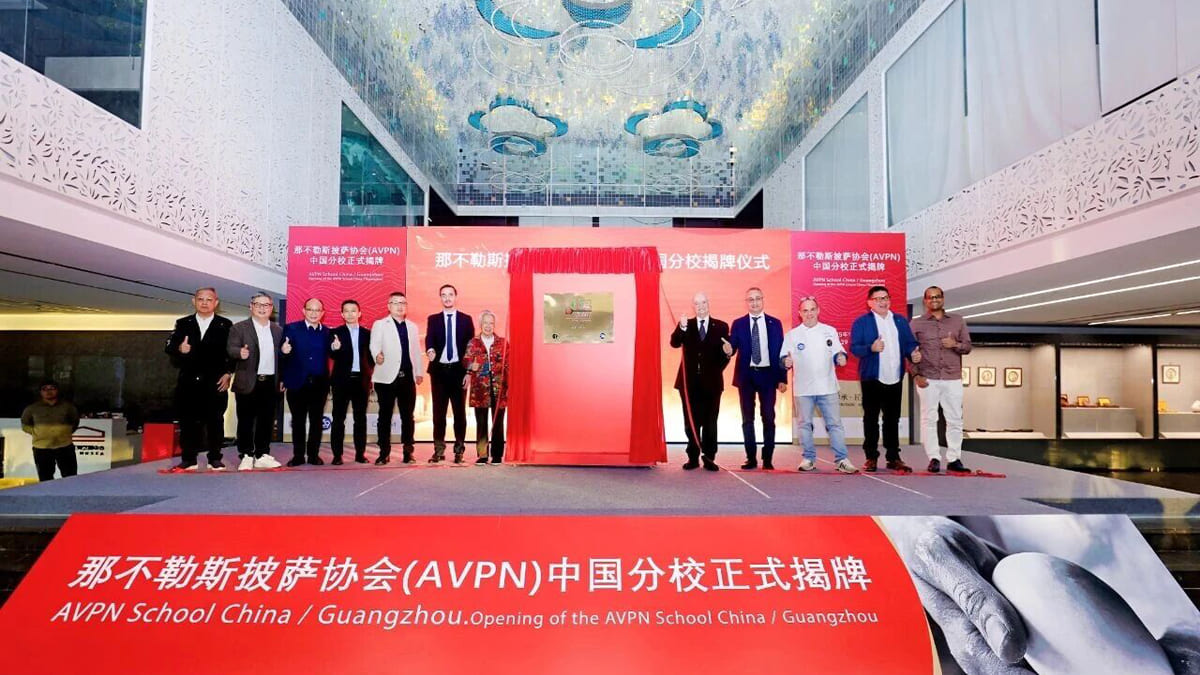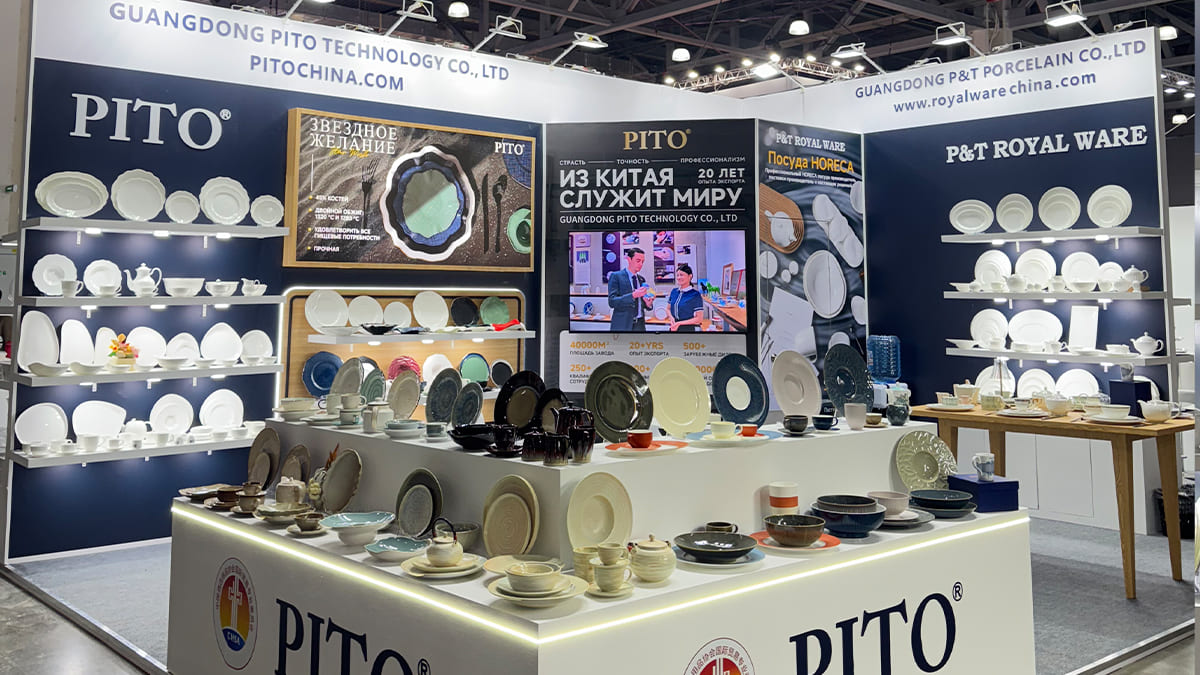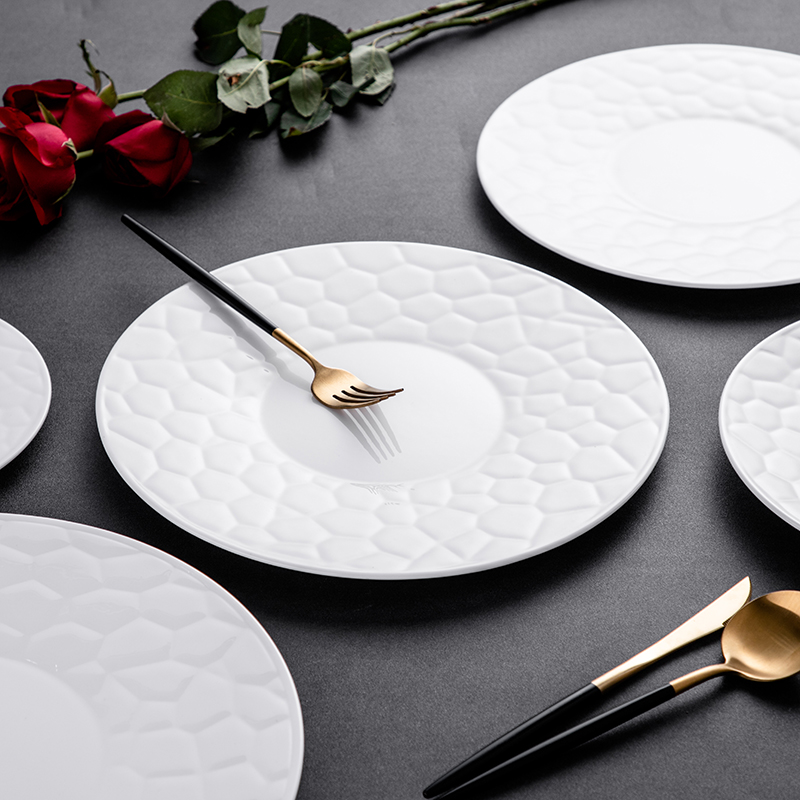
Las placas de cerámica han sido durante mucho tiempo una parte integral de nuestra experiencia gastronómica, proporcionándonos un resistente y estéticamente Superficie agradable para disfrutar de nuestras comidas. Estos artículos de vajilla versátiles tienen una importancia significativa en el mundo de la vajilla., Suponiendo un equilibrio entre la funcionalidad y la elegancia.
Ya sea una cena familiar casual o una reunión formal, platos de ceramica son la opción para muchos hogares y restaurantes. En esta publicación de blog, Nos sumergiremos más profundamente en El proceso de fabricación de las placas de cerámica, arrojar luz sobre la intrincada artesanía detrás de estos compañeros de comedor esenciales.
Los conceptos básicos de las placas de cerámica
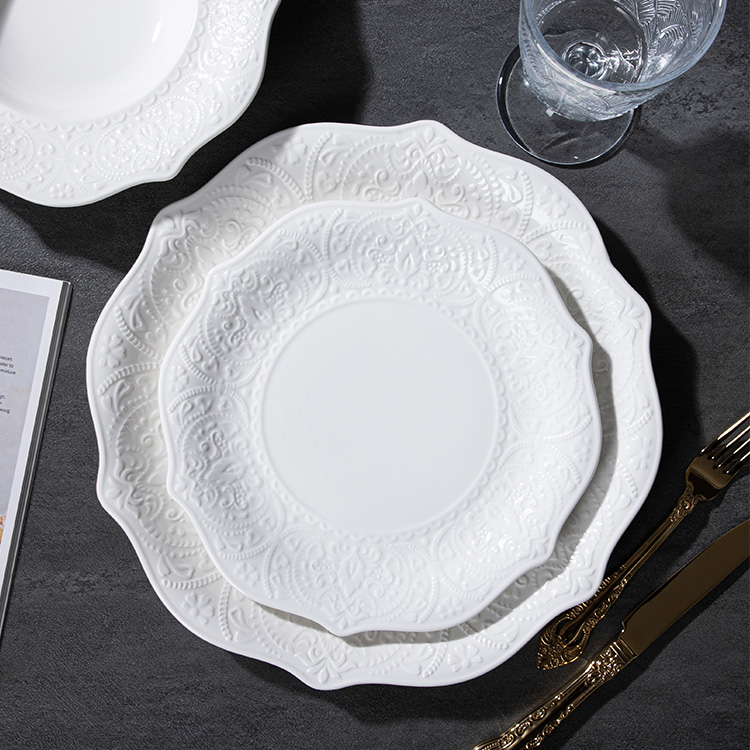
Las placas de cerámica son reconocidas por su durabilidad, versatilidad, y atractivo estético. A diferencia de sus contrapartes de plástico o vidrio, Las placas de cerámica ofrecen una sensación de sofisticación y sustancia a cualquier experiencia gastronómica. Aquí hay algunos puntos clave sobre las placas de cerámica.:
- Durabilidad: Las placas de cerámica están hechas de arcilla, que se dispara a altas temperaturas para crear un material resistente y resistente. Esto los hace resistentes a las grietas, arañazos, y ropa general, asegurando que puedan resistir los rigores del uso diario.
- Retención de calor: Una de las características destacadas de las placas de cerámica es su capacidad para retener el calor. Esto significa que su comida permanece caliente por más tiempo, Permitiendo una experiencia gastronómica agradable.
- Variedad de estilos: Las placas de cerámica vienen en una amplia gama de diseños, colores, y patrones, Haciendo que sea fácil encontrar la combinación perfecta para cualquier configuración de mesa o preferencia personal.
- Material de grado alimenticio: Las placas de cerámica se consideran seguras para el consumo de alimentos, ya que generalmente están hechos de materiales naturales sin productos químicos o toxinas nocivas.
Ahora que hemos sentado los cimientos, Vamos a profundizar en el proceso intrigante de cómo se fabrican las placas de cerámica. Al comprender los intrincados pasos involucrados, Podemos obtener una mayor apreciación por la artesanía detrás de estos compañeros de comedor esenciales.
El proceso de fabricación de las placas de cerámica
A. Preparación de materia prima
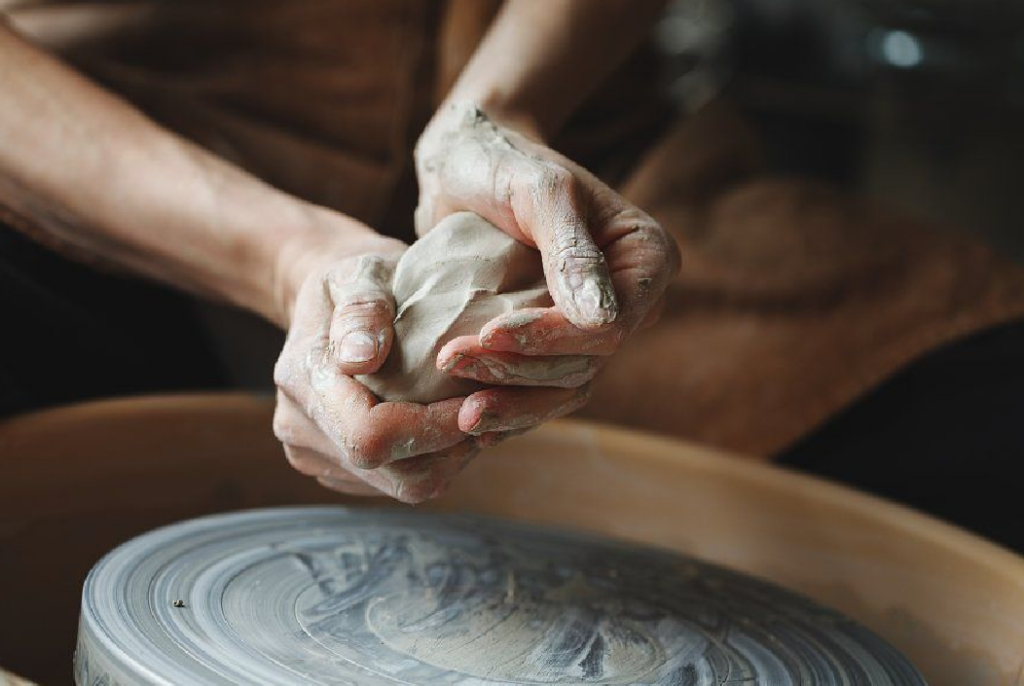
fuente: pinterest
Antes de que pueda comenzar el proceso de fabricación de placas de cerámica, Las materias primas deben estar correctamente preparadas. El componente principal de las placas de cerámica es arcilla, que a menudo se obtiene de minas de arcilla especializadas. Aquí están el pasos clave En la preparación de materiales:
- Clasificación: La arcilla cosechada se clasifica inicialmente para eliminar impurezas como rocas, leña menuda, y otras partículas extrañas.
- Limpieza: La arcilla se limpia a fondo para eliminar las impurezas restantes, Asegurar un material puro y consistente.
- Mezcla: Se pueden mezclar varios aditivos con la arcilla para mejorar sus propiedades, como aumentar su plasticidad o mejorar sus características de disparo. Estos aditivos pueden incluir feldespato, cuarzo, y caolín.
B. Formando las placas
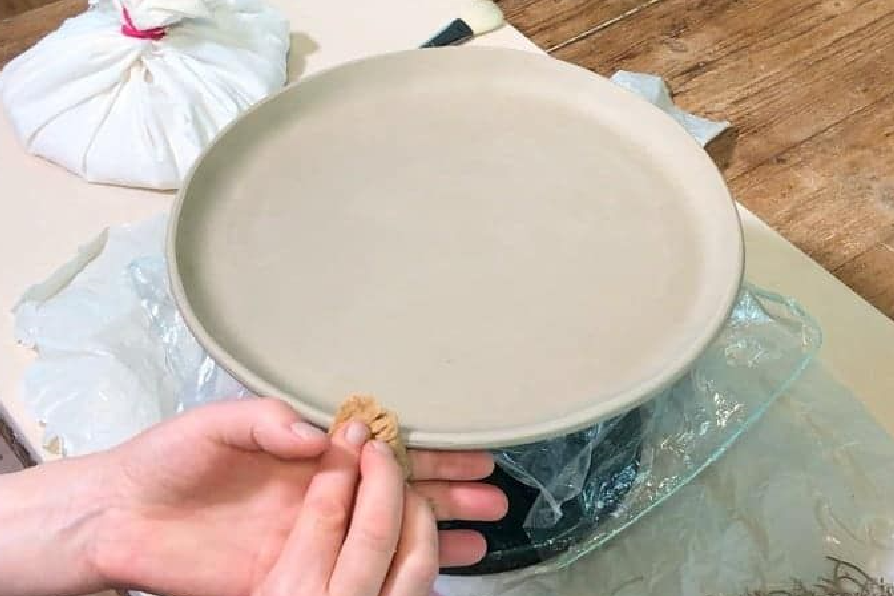
fuente: pinterest
Una vez que se prepara la arcilla, Es hora de dar forma a la forma deseada de la placa de cerámica.. Hay Varios métodos utilizado para formar placas de cerámica, incluido:
- Lanzamiento a mano: Los artesanos calificados utilizan la rueda de un alfarero para dar forma a la arcilla a mano. A través de una combinación de girar la rueda y manipular la arcilla, crean la forma y el tamaño del plato deseados.
- Fastidio: Este método implica verter arcilla líquida, conocido como Slip, en un molde de yeso. El molde absorbe agua del deslizamiento, permitiendo que se forme una capa de arcilla en la superficie del molde. Una vez que se logra el grosor deseado, El exceso de deslizamiento se vierte, Dejar la arcilla para que se seque y se solidifique.
- Moldeo de prensa: Aquí, La arcilla se presiona en un molde prefabricado con presión hidráulica o neumática. Este método permite la producción en masa de placas uniformes con formas consistentes..
C. Secado y disparo
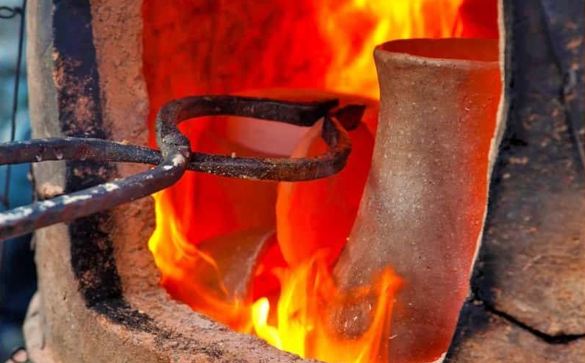
fuente: pinterest
Después de que se forman las placas, deben pasar por un proceso de secado y disparo para transformar la arcilla en un sólido, forma duradera. El pasos involucrados son los siguientes:
- El secado: Las placas se dejan secar a temperatura ambiente para eliminar el exceso de humedad gradualmente. Este proceso de secado gradual ayuda a evitar grietas y deformaciones..
- Disparo: Las placas secas se colocan en un horno y se someten a altas temperaturas que van desde 1000 a 2000 grados Celsius. Este proceso de disparo fusiona las partículas de arcilla, Creando una estructura de cerámica sólida. La temperatura y la duración exacta de disparo dependen del tipo específico de arcilla y las características de la placa deseadas.
D. Acristalamiento y decoración
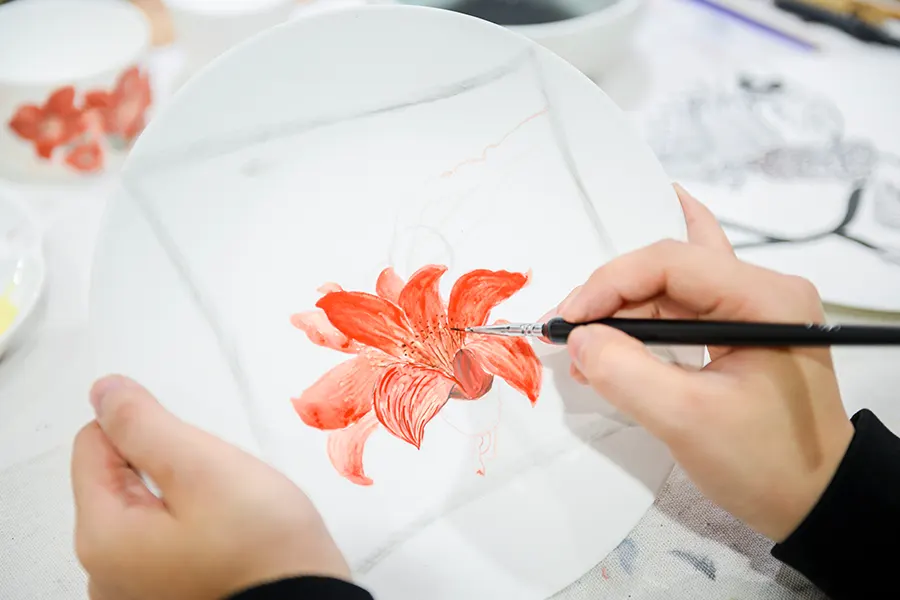
Una vez que se han disparado las placas, Se pueden glasearse para mejorar su apariencia y funcionalidad.. El proceso de acristalamiento imponer:
- Aplicación de esmalte: Se aplica una capa de esmalte a la superficie de la placa., típicamente hecho de una mezcla de minerales y pigmentos. El esmalte mejora el atractivo visual de la placa y proporciona un recubrimiento protector.
- Decoración: Se pueden emplear varias técnicas para decorar las placas de cerámica., como diseños intrincados de pintura a mano, Usar plantillas o plantillas, o incluso métodos de impresión digital. Estos elementos decorativos agregan un toque personal y un atractivo estético al producto terminado..
mi. Control de acabado y calidad
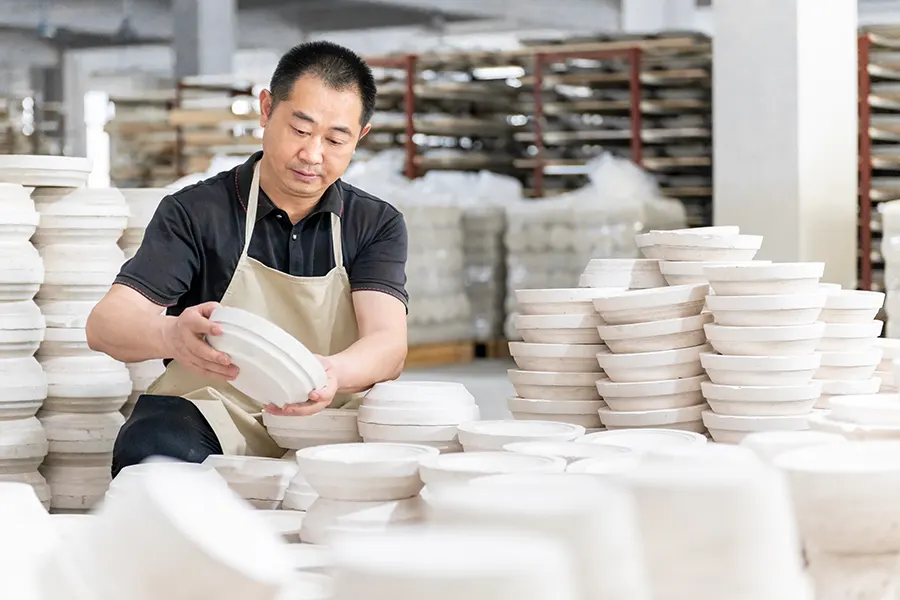
Los últimos pasos implican terminar las placas y garantizar que su calidad cumpla con los más altos estándares. Esto incluye:
- Suavizado y pulido: Después del glaseado y la decoración se aplican, Cualquier bordes o imperfecciones ásperos se suavizan. Esto le da a las placas un aspecto refinado y pulido.
- Control de calidad: Cada placa se verifica a fondo para cualquier defecto, como grietas, burbujas de aire, o inconsistencias de esmalte. Cualquier placa defectuosa se descartan, Asegurar que solo los productos de alta calidad lleguen al mercado.
Siguiendo estos meticulosos pasos, Las placas de cerámica se transforman de materias primas en piezas exquisitas adecuadas para nuestras mesas de comedor. La experiencia y la atención al detalle a lo largo del proceso de producción dan como resultado duradero, funcional, y vajillas visualmente atractivas que mejoran nuestras experiencias gastronómicas.
Consideraciones ambientales
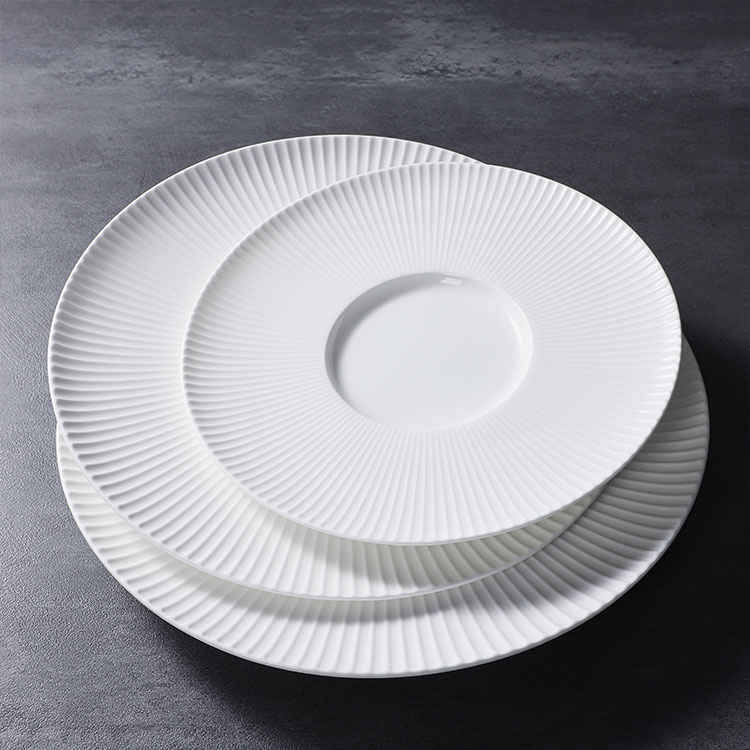
Además de sus cualidades estéticas y funcionales, Las placas de cerámica también tienen beneficios ambientales que los convierten en una elección sostenible para los consumidores ecológicos. Aquí hay algunas consideraciones ambientales notables:
- Uso de materiales naturales: Las placas de cerámica están hechas principalmente de arcilla, un material natural que ocurre. Esto reduce la dependencia de los materiales sintéticos, Hacerlos una opción más amigable con el medio ambiente en comparación con las placas hechas de plásticos u otras sustancias no biodegradables.
- Reciclabalidad: Las placas de cerámica son reciclables, lo que significa que pueden ser triturados y reutilizados como materias primas para nuevos productos de cerámica. Esto ayuda a reducir el desperdicio y promueve una economía circular.
- Desechos plásticos reducidos: Mediante el uso de placas de cerámica en lugar de plástico desechable o papel, usted contribuye a reducir la cantidad de desechos plásticos de un solo uso generados por la industria del comedor. Esto ayuda a combatir la contaminación ambiental y los efectos perjudiciales del plástico en los ecosistemas.
- Eficiencia energética: Mientras que el proceso de disparo requiere altas temperaturas, Los avances en la tecnología del horno lo han hecho más eficiente en la energía a lo largo de los años. Algunos fabricantes también han comenzado a usar fuentes de energía renovables para alimentar sus procesos de producción., reduciendo aún más su huella de carbono.
- Prácticas sostenibles: Muchos Fabricantes de vajillas de cerámica están adoptando prácticas sostenibles en sus operaciones. Esto puede incluir la arcilla de abastecimiento de manera responsable, Minimizar el uso de agua y energía, Reducción de emisiones de gases de efecto invernadero, e implementación de programas de reciclaje.
Eligiendo platos de cerámica para sus necesidades gastronómicas, Está tomando una decisión consciente para reducir su impacto ambiental y contribuir a un futuro más sostenible.
Conclusión

Al comprender el proceso detrás de su creación, Podemos apreciar mejor el valor y la belleza de las placas de cerámica.. No solo son placas de cerámica estéticamente agradable, Pero también poseen durabilidad, retención de calor, y una amplia gama de estilos para adaptarse a cualquier configuración de mesa. Además, Sus cualidades ecológicas y reciclabilidad los convierten en una opción ambientalmente responsable de los consumidores conscientes.
La próxima vez que disfrute de una comida servida en un plato de cerámica, Tómese un momento para apreciar el arte y la experiencia involucradas en la creación de una pieza de vajilla tan notable. Considere incorporar placas de cerámica en su rutina de comidas, Sabiendo que está tomando una decisión sostenible sin comprometer el estilo o la funcionalidad.
